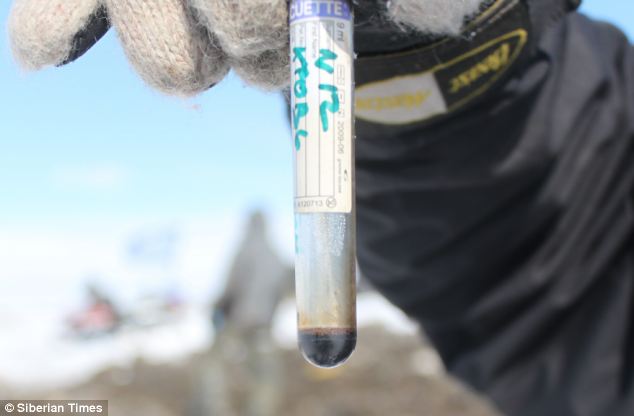39,000 Years Later, 'Yuka' The Mammoth Finally Reveals Herself to Us
A frozen woolly mammoth named Yuka goes on display in Japan, the news of which is creating ripples on social media platforms. The creature will be on display in Tokyo until September.
PHOTO: The 39,000-year-old female woolly mammoth found with flowing blood go on display in Japan
Thirty-nine thousand years old and finally in the limelight. A frozen woolly mammoth named Yuka goes on display in Japan.
The woolly mammoth is unveiled ahead of the exhibition (Picture: AFP/Getty Images)
Image via wordpress.comREAD: Woolly mammoth found frozen in Siberia after 39,000 years
Thirty-nine thousand years old and finally in the limelight. A frozen woolly mammoth named Yuka goes on display in Japan. The female was found in Russia and was 10 years old when she died.
She was discovered trapped in ice on islands off Siberia with parts of its carcass well preserved. But the upper torso and two legs, which were found in the soil rather than the ice, were gnawed by prehistoric and modern predators and almost did not survive.
Scientists have made several unsuccessful attempts to revive the species. Mammoth expert Norihisa Inuzuka said Yuka should provide more information about these creatures
Dr Grigoriev originally put the age of the animal at around 10,000 years but more recent dating tests suggest the creature is around 39,000 years old.
‘It has been preserved thanks to the special conditions, due to the fact that it did not defrost and then freeze again,’ he explained. ‘We suppose that the mammoth fell into water or got bogged down in a swamp, could not free herself and died.’
The hope is that at least one living cell of the mammoth was preserved ‘although even with such well-preserved remains, this may not be the case’, he added.
GALLERY: Amazingly preserved woolly mammoth found frozen in Siberia after 39,000 YEARS goes on display in Tokyo
The mammoth, pictured, was discovered in an ice tomb in the New Siberian Islands, or Novosibirsk Islands earlier this year. Parts of the carcass are especially well preserved because they remained entirely frozen for thousands of years
Image via dailymail.co.ukA worker at the exhibition hall in Yokohama, south of Tokyo, inspects the snout of the 39,000-year-old woolly mammoth. Scientists discovered a well-preserved sample of blood from the creature in May and are looking into ways in which the extinct species could be brought back from extinction
Image via dailymail.co.ukThe snout of the 39,000-year-old mammoth, pictured, on display in Tokyo. When the mammoth was discovered preserved muscle tissue was also found from the creature, aged between 50 and 60 when she died, according to the Russian team who made the discovery on islands off the northern coast of Siberia
Image via dailymail.co.ukThe foot of the female woolly mammoth, pictured, shows that many of the animal's original features - including the hair that gave the mammoth its woolly name - is still intact. The upper torso and two legs, which were found in the soil and not buried in ice, were gnawed by predators and almost didn't survive
Image via dailymail.co.ukPHOTO: A researcher working near the carcass of the woolly mammoth soon after it was found
A researcher working near the carcass of the woolly mammoth soon after it was found (Picture: Semyon Grigoriev/ AFP/Getty Images)
Image via wordpress.comScientists who found the mammoth were also able to extract a blood sample from beneath the carcass of the female mammoth.
PHOTOS: A sample of blood and well-preserved sample of muscle tissue discovered from the carcass of a female woolly mammoth
As well as a sample of blood, Russian scientists also discovered a well-preserved sample of muscle tissue from the woolly mammoth carcass. The blood and tissue were preserved because they were buried in an ice tomb on the Novosibirsk islands for what's thought to have been 10,000 years
Image via dailymail.co.ukA researcher from the North-Eastern Federal University in Siberia holds a test tube with a sample of well-preserved blood found in a carcass of a female woolly mammoth. The sample was discovered on a remote island in the Arctic Ocean and is thought to be the first discovery of its kind
Image via dailymail.co.uk







